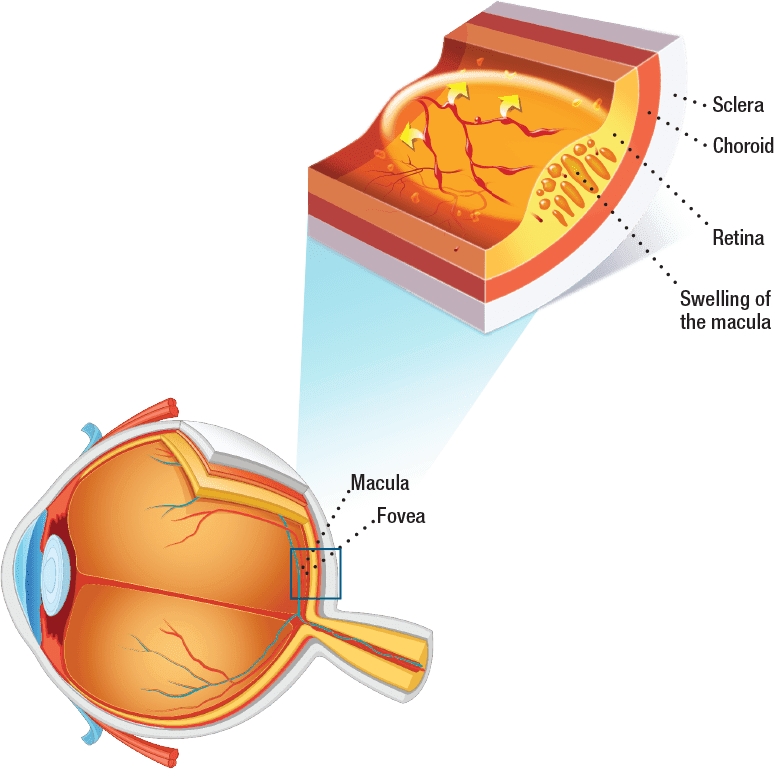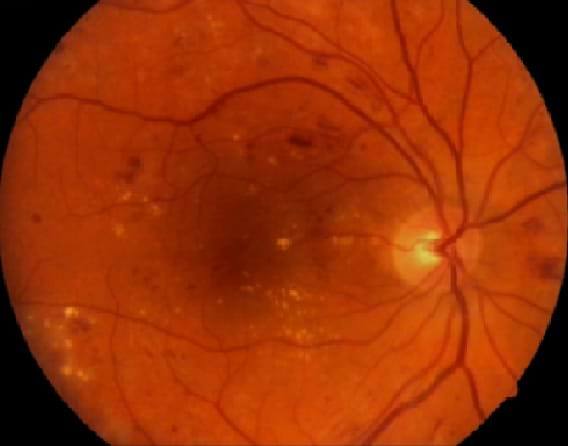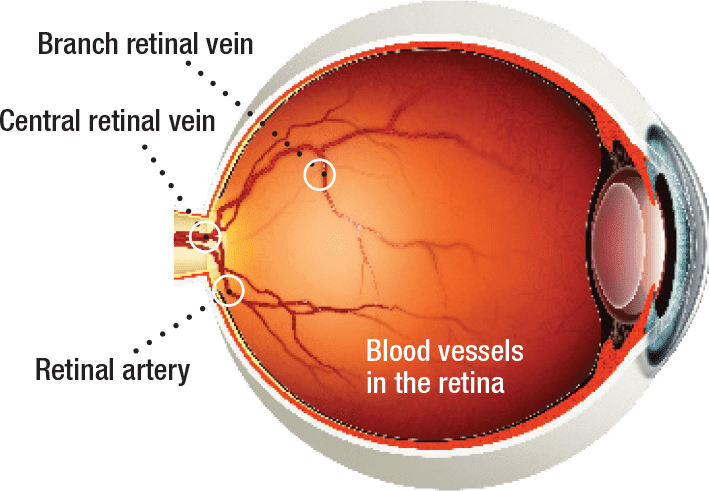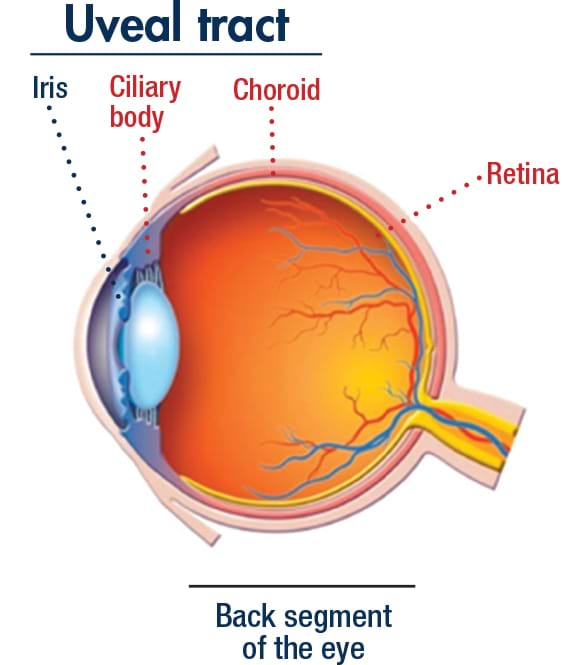HOW DOES YOUR CONDITION
IMPACT YOUR VISION?
IMPACT YOUR VISION?

UNDERSTANDING VISUAL ACUITY
Visual acuity is the sharpness of vision and is measured by the ability to read letters on an eye chart.
20/20 vision means you can see the same at 20 feet that a person with ideal vision sees at 20 feet.

DECREASED VISUAL ACUITY MAY AFFECT YOUR ABILITY TO:
- Recognize faces
- Obtain a driver's license
(20/40 vision is the
minimum in 47 states) - Have vision to dial a telephone
A healthy retina and macula are essential for normal vision.

DIABETIC MACULAR EDEMA (DME)
- Damage to the small blood vessels in the eye can lead to diabetic eye disease (retinopathy)
- Fluid leaking from these blood vessels may cause the central part of the retina (the macula) to swell. This is called DME
- Macular edema (swelling of the macula) is the most common cause of vision loss in people who have diabetic retinopathy

Photo of a retina with diabetic macular edema; the dark area shows edema and bleeding.
SYMPTOMS
- You may not have any symptoms if your doctor finds DME early
- Can lead to blurry central vision, with blurriness ranging from mild to severe
- Can cause significant vision loss over time

Mild
blurry vision

Moderate
blurry vision

Severe
blurry vision

Learn more about DME

Learn more about DME

MACULAR EDEMA (SWELLING OF THE MACULA) FOLLOWING RETINAL VEIN OCCLUSION (RVO)
- Blood circulating through the retina leaves the eye by draining into the retinal vein
- A retinal vein occlusion is a blockage that prevents normal blood flow out of the eye
- A blockage may affect the main vein leaving the eye (central retinal vein occlusion [CRVO]) or one of the smaller, branch veins that lead to the main vein (branch retinal vein occlusion [BRVO])
- RVO is more common once people reach middle age

BRVO

CRVO
These pictures show bleeding that may happen in the retina when a retinal vein becomes blocked in someone who has BRVO or CRVO.
SYMPTOMS
- Sudden blurring or vision loss in all or part of one eye are most common
- For some patients, the vision loss may last for a few seconds or minutes or may be permanent
- The amount of blurring or vision loss depends on how much damage to the retina has occurred

Mild
blurry vision

Moderate
blurry vision

Severe
blurry vision

Learn more about RVO

Learn more about RVO
NONINFECTIOUS UVEITIS
AFFECTING THE BACK SEGMENT
OF THE EYE
- Uveitis (pronounced you-vee-eye-tis) is inflammation of the uvea, which is the middle layer of the eye
- Uveitis can also affect the retina and blood vessels of the eye
- Inflammation is caused by retinal cells, your immune system’s white blood cells, and the chemicals these cells release
- Noninfectious uveitis means that although the uvea is inflamed, no bacteria or viruses are found in the eye
- The cause of the inflammation with noninfectious uveitis is often unknown

Uveal Inflammation Affecting the Back Segment of the Eye (Red Text)
SYMPTOMS
- Decreased vision and irregular floating black spots (floaters)
- Vitreous haze (cloudiness) can also contribute to decreased vision
- More severe disease may lead to significant loss of vision

Learn more about noninfectious uveitis affecting the back segment of the eye

Learn more about noninfectious uveitis affecting the back segment of the eye



